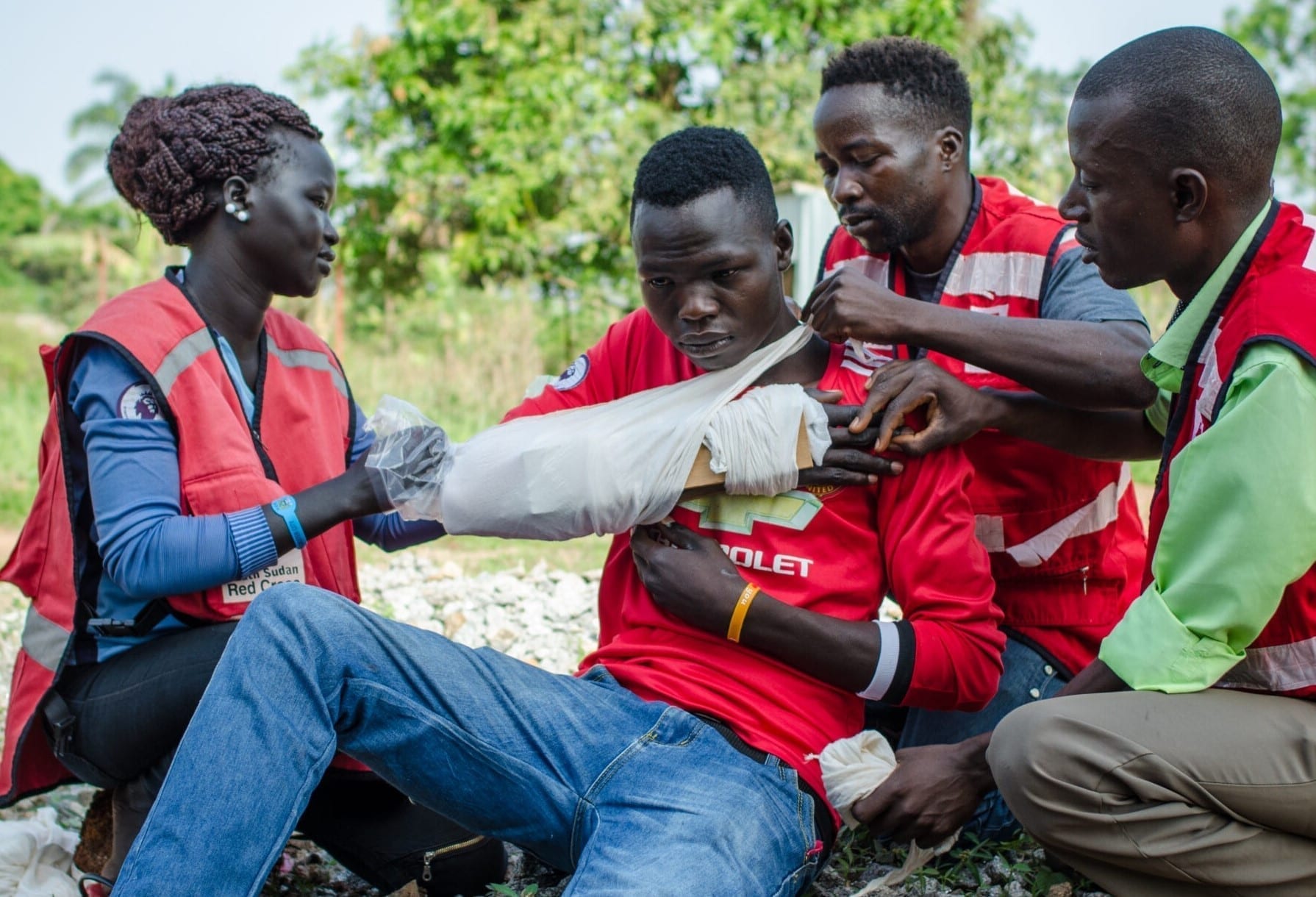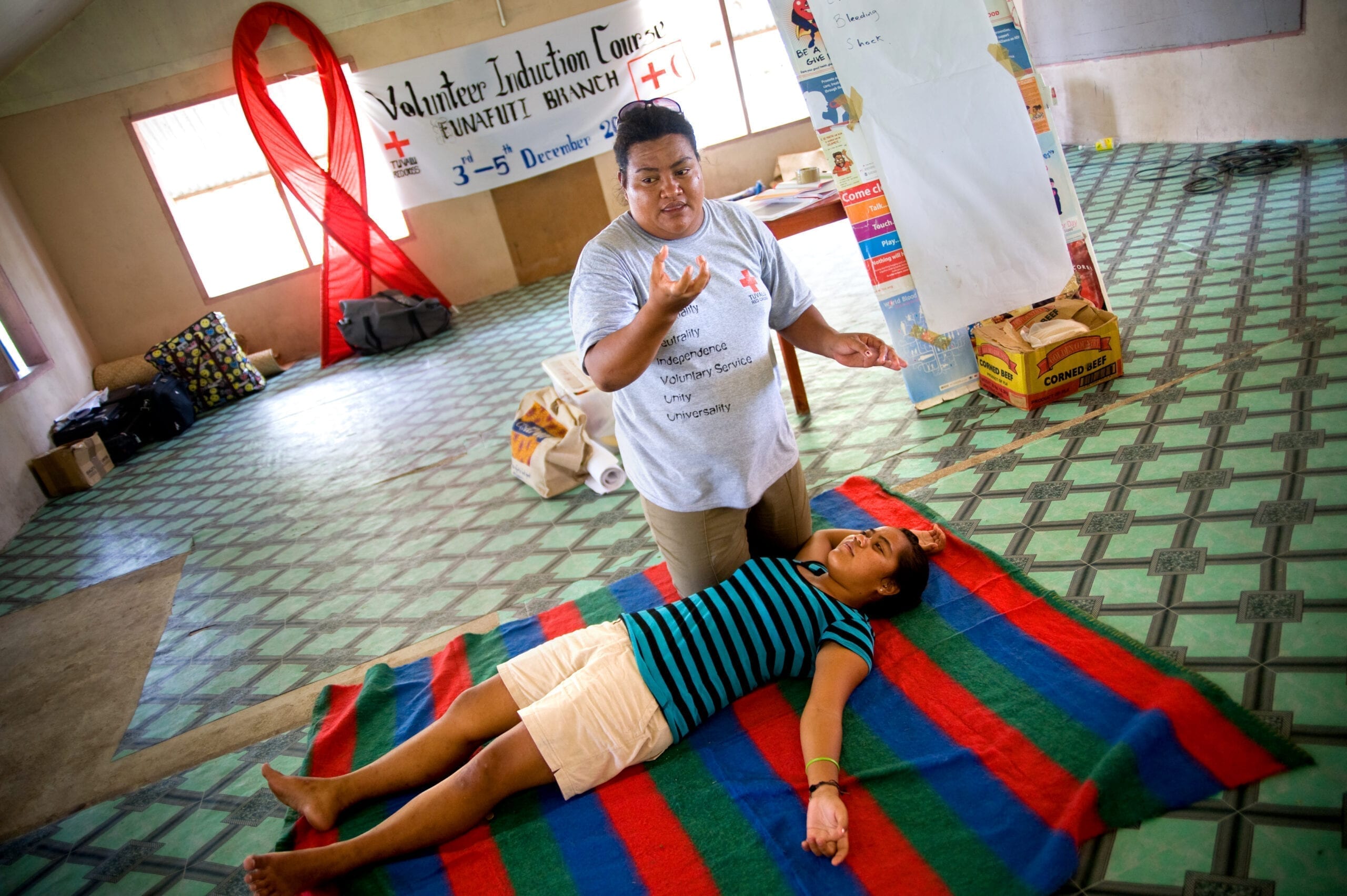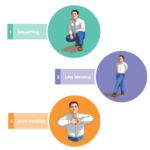Chest pain
Recognise the symptoms that may indicate a heart attack and access emergency medical services immediately.
Allergic reaction and anaphylaxis
Stop further contact with the allergen and help the person to use their medication.
Stroke
Recognise the early signs of stroke and access emergency medical services for help immediately.
Diabetic emergency
Give the person something sweet to eat or drink to raise their blood sugar level (in the case of low blood sugar).
Seizure
Protect the person from harm.
Feeling faint
Help the person get into a safe and comfortable position and ask them to do physical counterpressure manoeuvres to increase blood flow to their brain.
Abdominal pain
Reassure the person and make them comfortable.
Fever
Assist the person to take paracetamol or acetaminophen to control their fever.
Emergency childbirth
Support the person to give birth, providing comfort to both the woman and baby.
Sore throat
Advise the person to take the recommended dose of paracetamol to relieve their pain.
Earache
Advise the person to take the recommended dose of an over-the-counter painkiller (e.g., paracetamol).
First aid guidelines sections
Explore the guidelines
Published: 15 February 2021

First aid
Explore the first aid recommendations for more than 50 common illnesses and injuries. You’ll also find techniques for first aid providers and educators on topics such as assessing the scene and good hand hygiene.

First aid education
Choose from a selection of some common first aid education contexts and modalities. There are also some education strategy essentials to provide the theory behind our education approach.

About the guidelines
Here you can find out about the process for developing these Guidelines, and access some tools to help you implement them locally.














